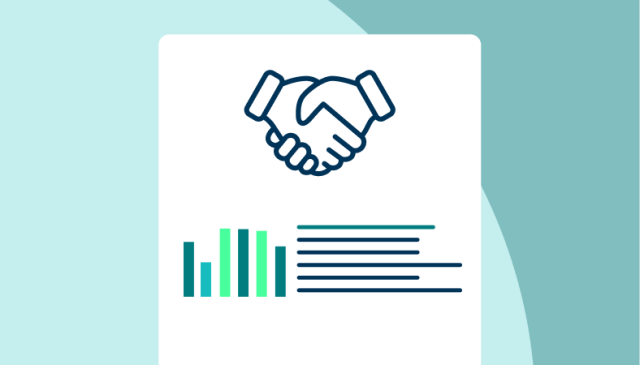Disaster checklist: 5 questions to ask before you need to
What happens if disaster strikes your community? How will you and your employees begin the process of recovery after an emergency?
Check out our top five questions to ask yourself about your organization's emergency preparedness:
1. Do we have a disaster response plan?
Sounds obvious, but this one’s critical! No matter where your business is located, the most important thing is to actually have a documented disaster plan that includes:
- How everything from recovery efforts to ongoing business will be managed.
- How resources should be prioritized and allocated after a disaster.
- The process for communicating necessary information to staff and stakeholders.
- How media/community relations will be handled.
- Medical response and/or volunteer plan.
From general preparedness procedures to a region-specific (i.e., hurricane, tornado, wildfire, etc.) plan, your organization needs to know what to do should an event occur.
2. Is there location-based information that each facility should have?
If your organization spans multiple locations or regions, it’s a good idea to create site-specific contact lists and procedures to cover all your bases, such as:
- Local law enforcement and emergency response contact information.
- Evacuation procedures or routes.
- Environmental regulations that go into effect during a disaster.
It’s also important to keep a regularly updated list of all employees on-site should a disaster occur during the workday. Having this information on hand helps ensure that everyone can be accounted for or that the correct contact can be reached, should it be necessary.
3. Who’s in charge? (Of what, and what are their responsibilities?)
When a storm hits or the hills catch on fire, you can’t just go about business as usual. That’s why you need to designate a clear chain of command to streamline your organization’s decision-making. A few key responsibilities to determine prior to a disaster include:
- Who is the ultimate decision-maker and who has the authority to act as a proxy?
- Who’s in charge of communicating information to employees? To the public?
- Who is responsible for overseeing operations of unaffected parts of the business?
- Who are our backups for essential personnel?
By designating major roles, you can help your organization swiftly return to pre-event operations. Though you may have a plan in place, remember to let emergency responders take charge of what they need to and support them the best you can.
4. Is staff properly trained?
One of the smartest things you can do before you need it is to build a dedicated emergency response team, with dedicated personnel trained in disaster-specific tasks. Training and drills can help you understand people’s capabilities for performing certain tasks.
- Define the roles and responsibilities of each staff person.
- Establish back-ups for essential personnel.
- Your CMMS partner should be able to coach you through the emergency response process so don’t forget to schedule periodic check-ins between primary users and vendors to ensure preparedness aspects are covered.
It’s important to hold training courses for everyone, not just your core team so each person can clearly understand their role. Involving your whole organization in training exercises helps minimize confusion during a disaster.
5. Is our documentation sufficient?
Whether it’s your standard operating procedures, lists of hazardous materials, general inventory, or all the aspects of your organization’s incident recovery plan, documentation is a critical component for disaster response. (Hint: a computerized maintenance management system (CMMS) can help centralize your documentation to ensure your processes are followed and your assets are accounted for).
A CMMS can help you track your:
- Hazardous materials. Know where substances are stored and the health or safety concerns if those materials are exposed to extreme heat, update your records regularly to ensure accuracy in the types, quantities and locations of materials, and make sure that everyone has access to these lists in the event they need them.
- Team workflow. Before, during and after the event, know what tasks are getting finished, who’s completing them and any other details that can help your operations run smoothly.
- Facilities and fleets. Keep tabs on your assets, schedule preventive maintenance and keep everything in tip-top shape to help circumvent any unexpected damages resulting from a natural disaster.
- Recovery. Create a coding and labeling protocol for work orders or asset repairs. You can include your communication plan, dedicated emergency response personnel, and other critical roles and responsibilities in your documentation.
- General processes and plans. Store your most valuable information in one, centrally located place to keep business moving, no matter what.
Having the right tools in place can help operations maintain — and return to — peak efficiency should disaster strike.
On the Brightly side, you can be prepared
It shouldn’t take a natural disaster to realize the importance of proactive planning. A CMMS solution can help you get your ducks in a row, so you’re ready for any fire, flood or other disaster. Brightly’s CMMS software can help you reduce your risk when — and where — you need it most.
If you’d like to learn more about how a Brightly software solution has helped over 12,000 organizations worldwide with business continuity plans, schedule a free custom demo today. You can also download our Emergency Preparedness Checklist so you can get down the details of being prepared for any disaster.



